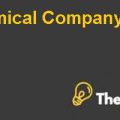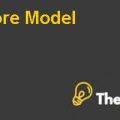
Whole Food Market
Q1.) What are the chief elements of the strategy that Whole Foods Market is pursuing?
Whole Food Market chief elements are based on provision of quality food product that are free from preserved food items or artificial flavors, meanwhile, it pursues the strategy to out compete whole world market through its organic food products. However, Whole Food Market’s ultimate objective will be to increase shareholders’ value but in order to achieve its prime objective Whole Food Market is pursuing a strategy of offering healthy products, which will enable not only its consumers but also its employees to live a healthy lifestyle. In addition to this, Whole Food Market’s core values are another chief element of its strategy, which leads to the success of its marketing slogan “Whole Food, Whole People, Whole Planet”. Moreover, these core values are available throughout its stores, which enable team member in adhering to these core values.
Q2.) Describe and evaluate their business model.
Whole Food Market’s business model is a very much successful one, which has been set for producing and selling organic food products and its success can be evaluated through the fact that its competitors are using its organic food product as a benchmark for their own organic food products. Furthermore, it offers a unique buying experience through well trained and knowledgeable team members, who give consumers an exceptional experience while they shop from Whole Food Market’s stores; however, this suggests that Whole Food Market’s business model is a successful business model.
Q3.) Do you think John Mackey has a good strategic vision for Whole Foods? Why or why not? What do you like/dislike about the company’s mission/vision and the core values underlying it? Explain.
John Mackey has a good strategic vision for Whole Food Market because he believes that high quality organic food products offering to wider society will develop their diet habits to prefer organically processed food, which will boost the demand for its organic food products not in local market but in the international market as well. John Mackey’s vision was very clear and it aimed to make Whole Food Market an internationally recognized brand for its organic food products. Meanwhile, Mackey wanted to set standards for organic food market and he is very much interested in achieving growth by adding more and more stores in Whole Food Market’s portfolio in order to increase revenues.
In addition to this, Whole Foods Market’s mission statement is very much appealing to consumers because not only it is easy to understand but it also focuses on the sustainability factor while providing the organic food products to the world ; this is done in order to emphasize its concerns for the planet in terms of sustainability. Moreover, the mission statement says that our organic food product will let the people live healthy life and use of organic product by whole people will pay back to the customable world. Furthermore, the core values are in place at every level and they are considered in each operation, meanwhile, Whole Food Market has developed such culture that employees do not feel like they are following some rule while adhering to the core values but in fact they feel like this is the way how it can do it, therefore, its core values do matter.
Q4.) Based on the financial statement data in the case, how well is Whole Foods Market performing? Use financial ratio information you develop to justify you answer.
Inventory turnover ratios are not very much improved but they represent that Whole Food Market has 17 times of its closing inventory during the year 2009, which shows the effective management of its inventory. In addition to this, Whole Food Market has generated revenues of 2.94 times of its total fixed assets in the year 2009; which was previously 2.88 times; hence, it has improved its fixed asset utilization efficiency by generating more revenues in comparison to its fixed assets.
Furthermore, Whole Food Market has been able to recover 76.69 times of its closing trade receivables, meanwhile, the average credit period of 4.76 days state that Whole Food Market do not allow long credit periods to its consumer, which means that it has effectively managed its receivables that contributes towards the better management of overall working capital requirements. Additionally, the gross profit margins were 34.3% in the year 2009, which are sustainable but they are not growing with the growth in sale revenues. Furthermore, operating profit margins were 3.5% in the year 2009 and these margins have increased by 0.3% from last years’ margins, which shows the effective control of its operating cost that had enabled Whole Food Market to generate more operating profits, meanwhile, net income margins also improved by 0.4% in comparison to last year’s margins.
Moreover, cash flow margins have also improved and Whole Food Market has been able to generate more cash in comparison with last years’ cash flows and it has generated cash flows of $199.46 million from financing activities; which represents raising more debt financing in order to repay the mature debt...............................
This is just a sample partial case solution. Please place the order on the website to order your own originally done case solution.













